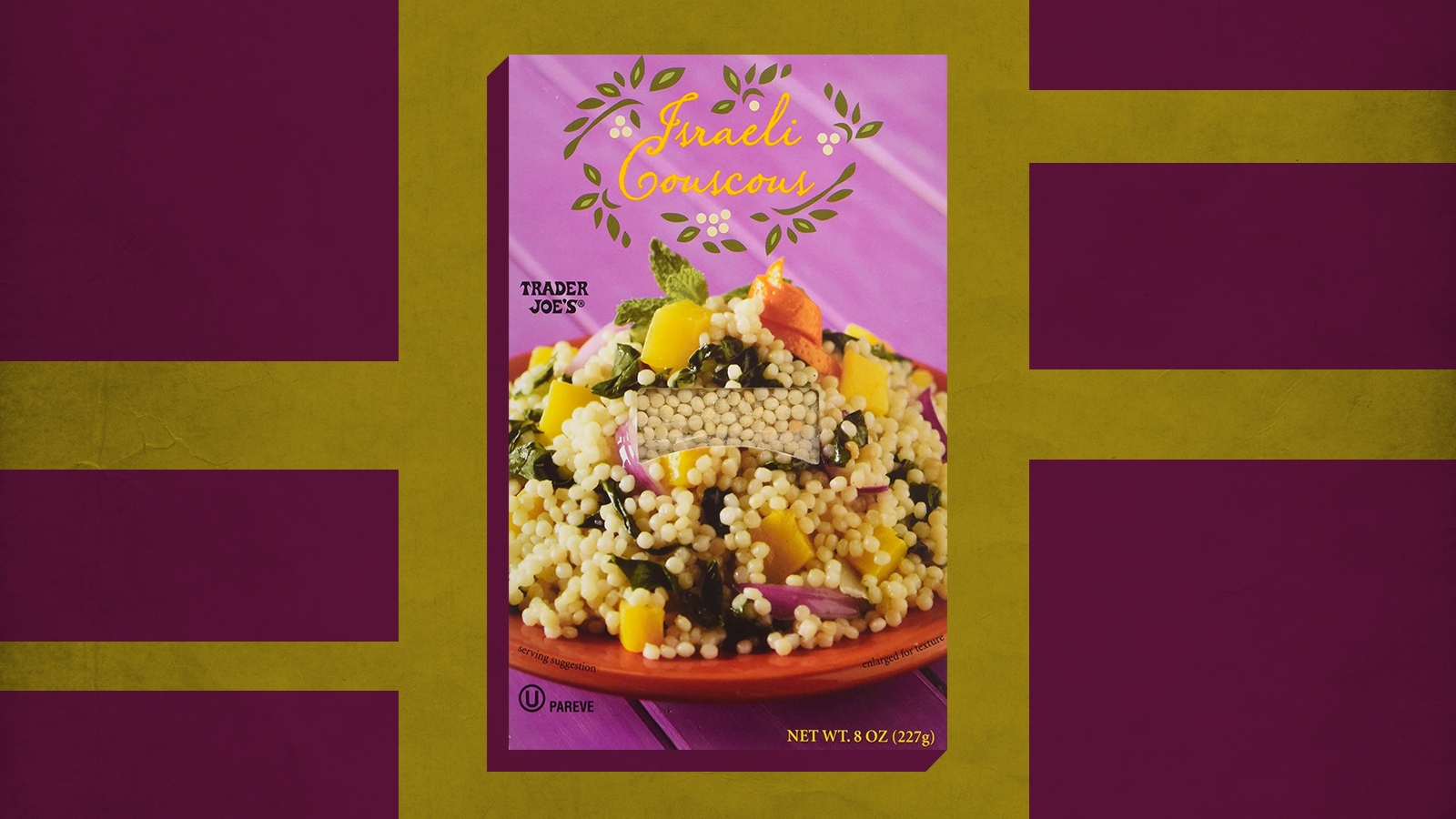Due to what the company is calling a switch in production, Trader Joe’s has recently removed “Israel” from the label of their boxed pearl couscous.
I noticed the change during my last trek to Trader Joe’s when I couldn’t find this key grocery item (I consider couscous an essential food group). I owe my passion for this small pasta to the lavender Israeli Couscous box that I make a point to pick up every Trader Joe’s run.
I came to realize that the product I was looking for was actually there the entire time — just under a different name. As recently pointed out by the Kosher Trader Joe’s Facebook group, the grocery chain has rebranded the distinctive purple box to just “pearl couscous,” rather than “Israeli couscous.”
Trader Joe’s isn’t a stranger to this type of marketing, as other items like tahini or shakusuka don’t attribute the dishes to any distinct region. For a store that offers a variety of grocery items from around the world, it is most likely an easier way to market their in-house products.
The Nosher celebrates the traditions and recipes that have brought Jews together for centuries. Donate today to keep The Nosher's stories and recipes accessible to all.
Labeling this couscous variety simply as “pearl” is an easy generalization to make if you haven’t delved into the history. However, this style of couscous is distinctly Israeli, due to its method of preparation and the time period it was invented.
Known as “ptitim,” the pearl shaped wheat product was actually a mandated invention by the Israeli government in the 1950s during the rationing period that came about when approximately 700,000 people immigrated to Israel, effectively doubling their population and putting a strain on their food and economic resources.
These restrictions, of course, proved ineffective due to the restrictive nature of the diet. So, to remedy the issue, prime minister David Ben-Gurion asked food manufacturer Osem to create a cheaper, wheat-based alternative to rice, which led to a baked wheat product that’s molded before cooking to achieve the same granular shape.
After the ptitim proved successful due to its quick preparation time, Osem began producing a rounder variety inspired by the classic couscous, which garnered comparison to pearls, and is the same variety utilized in “pearl couscous” dishes today, such as the product at Trader Joe’s.
In all fairness, Israeli couscous does have comparable processors. Levantine moghrabieh is also a round, baked couscous eaten in Syria, Lebanon and Jordan, along withmaftoul in Palestinian cuisine. However, the nature of creating an extracted paste from the wheat flour, rather than just coating the pasta, is what makes Israeli couscous a distinct product of 1950s Israel and allows it to maintain the label.
When reaching out to Trader Joe’s for comment on the title change, a representative said that the company “…recently switched to a new supplier for this product and it is now sourced domestically rather than from Israel,” but couldn’t offer more details on the rebranded couscous. Technically speaking, this isn’t a dishonest way of labeling the product. However, given the history of the dish, Israeli couscous would be the more accurate way to label this particular type of couscous and its preparation style, even if made outside of Israel.
In short, the other Israeli couscous lovers and me can rest easy, because the beloved product is here to stay, just under a different (and not so accurate) label.



